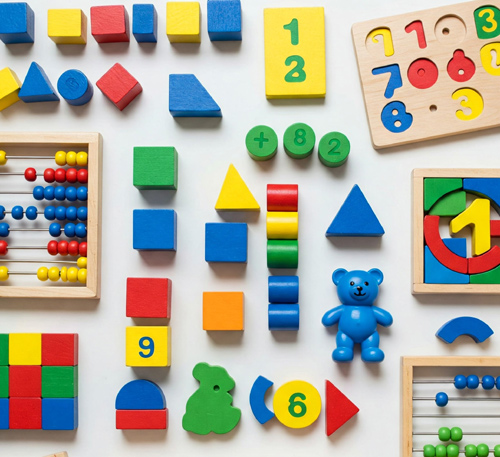Table of Contents
Math toys are more than just playthings; they’re powerful tools that can help children develop a love for learning and build essential math skills. By making learning fun and interactive, these toys can transform abstract concepts into tangible and engaging experiences. Let’s explore the exciting world of math toys!
The Benefits of Math Toys
- Improved Mathematical Skills: Math toys provide hands-on experiences that reinforce key mathematical concepts, leading to a substantial improvement in overall proficiency.
- Enhanced Problem-Solving Abilities: Math toys are filled with challenges and puzzles, nurturing effective problem-solving strategies and analytical thinking skills.
- Increased Engagement: The interactive nature of math toys captivates children’s attention more effectively than traditional lessons, fostering a positive attitude toward learning.
- Reduced Math Anxiety: By infusing fun into mathematical exercises, math toys make the subject more approachable and less intimidating for young learners.
- Development of Cognitive Skills: Math toys challenge children’s minds, helping them develop and improve important cognitive skills such as problem-solving, critical thinking, and logical reasoning.
- Encourages Creativity: Math toys stimulate children’s imagination and creativity, allowing them to explore multiple solutions to a single problem.
- Improved Fine Motor Skills: Many math toys require hands-on interaction, aiding in the development of fine motor skills, eye-hand coordination, and spatial awareness.

Types of Math Toys
- Counting Toys: These toys help children learn number recognition and counting skills. Examples include counting bears, number cards, and stacking toys. >>To buy in Amazon
- Math Manipulatives: These include items like pattern blocks, tiles, and cubes, which provide concrete ways to compare and operate on quantities. They help in understanding place value, addition, subtraction, multiplication, and division. >>To buy in Amazon
- Geometry Toys: These toys help children recognize geometric shapes and understand relationships among them. Examples include shape sorters and geometric solids. >>To buy in Amazon
- Measurement Toys: These toys help children understand size, weight, and measurement using both nonstandard and standard units. Examples include rulers, scales, and measuring cups.>>To buy in Amazon
- Money Toys: These toys, like play cash registers and play money, teach children about real-world experiences, the concept of cash, counting, and problem-solving.>>To buy in Amazon
- Math Games: Board games and card games that incorporate math concepts can make learning fun and engaging. Examples include games that focus on addition, subtraction, and pattern recognition.>>To buy in Amazon
- STEM Toys: Toys that integrate science, technology, engineering, and math can help children develop a wide range of skills.>>To buy in Amazon
How to Use Math Toys for Learning
- Start with the Basics: Begin with simple counting and number recognition activities.
- Make it Hands-On: Encourage children to touch and manipulate the toys to make learning more concrete.
- Incorporate Play: Use the toys in games and activities to keep children engaged.
- Ask Questions: Encourage children to explain their thinking and problem-solving processes.
- Connect to Real Life: Relate math concepts to everyday situations to make learning more relevant.
By incorporating math toys into a child’s learning experience, you can help them build a strong foundation in math and develop a lifelong love for learning.
